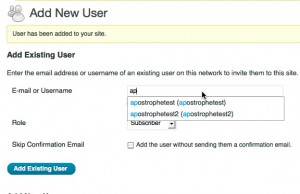Hey you! Do something about SOPA and PROTECT IP..
The Stop Online Privacy Act (and its cousin in the Senate, the PROTECT IP Act) are inching closer to passage. Time is running short for you to do what you can to stymie this legislation, which could very well destroy the open internet as we know it. (Don’t know about SOPA? Get a nice overview in this short video, or check out Jeff Sayre’s helpful bibliography of resources about the bill.)
Why you should care about this
If you are reading my blog, you likely fall into one of a few camps, each of which has a vested interest in preventing the passage of SOPA and PROTECTIP:
- If you are a developer, user, or advocate of free and open source software, you have several reasons to be concerned about the proposed legislation.
For one thing, the small-to-medium sized web organizations that are most likely to be targets of SOPA’s blacklisting protocols make up the bulk of the clientele for many web developers I know. These organizations generally do not have the visibility or high profile to put up a stink when and if they fall prey to overzealous “copyright” claims, nor do they have the deep pockets to fund the necessary legal defenses. The danger is especially great for websites that accept – or are built on – user-generated content, like many WordPress and BuddyPress sites; SOPA provides for the blacklisting of entire domains, based merely on the a few pieces of “offending” content, even if the content was not created or posted by the domain owners. Over time, these threats and constraints are bound to make the development of these kinds of sites far less feasible and attractive, resulting in less work for developers – and less development on the open source projects that are largely subsidized by this kind of work.
On a deeper level, those who are interested in the philosophical underpinnings of free software – the rights of the user – should be terrified by the prospect of media corporations gaining what amounts to veto power over our most fecund channels for the exercise of free expression. Free software lives and dies alongside a free internet. When one level of our internet infrastructure (DNS) is under the control of a self-interested few, it makes “freedom” at higher levels of abstraction – like the level of the user-facing software – into an illusion.
- If you are an educator or an instructional technologist, especially one who endorses the spirit of open educational movements like (the OG) edupunk and ds106, you should be flipping out about SOPA.
At an institutional level, thoughtful folks in higher ed and edtech have been fighting for years against a FERPA-fueled obsession with privacy and closedness. They’ve made strides. Platforms that foster learning in open spaces – stuff like institutional blog and wiki installations – have become increasingly commonplace, demonstrating to the powers that be that, for one thing, the legal dangers are not so great, and for another, whatever legal concerns there may be are far outweighed by the pedagogical benefits to be reaped from the open nature of the systems. The threats put into place by SOPA are likely to undo much of this work, by tipping the scales back in the direction of fear-driven policy written by CYA-focused university lawyers. Advocates of open education, and the platforms that support it, should be keen not to let their efforts go to waste.
At the level of the individual student, the case is more profound. The most promising thread in the story of higher ed and the internet – the thread running through Gardner Campbell’s Bags of Gold and Jim Groom’s a domain of one’s own – is, in my understanding, founded on notions about student power and agency. Users of the internet are not, and should not be, passive actors and consumers of content. Instead, they should take control of their (digital) selves, becoming active participants in the construction of the web, the web’s content, and their own avatars. SOPA and its ilk are an endorsement of the opposite idea: the “ownership” of creative content on the internet is heavily weighted toward media companies, which is to say that you are allowed to be in control of your digital self until it causes a problem for a suit at MPAA or RIAA. The entire remix/mashup culture of ds106 is impossible in such a scenario. If you think that this culture, and the ideology of student personhood that underscores the culture, is worth saving, you should be fighting SOPA tooth and nail.
What can you do? Write a blog post. Join or support the Electronic Frontier Foundation. Most importantly, if you are an American, contact your representatives in Congress. The Stop American Censorship site makes this easy, and gives you all the talking points you’ll need. (“This bill is a job killer!”)
Do it now!
